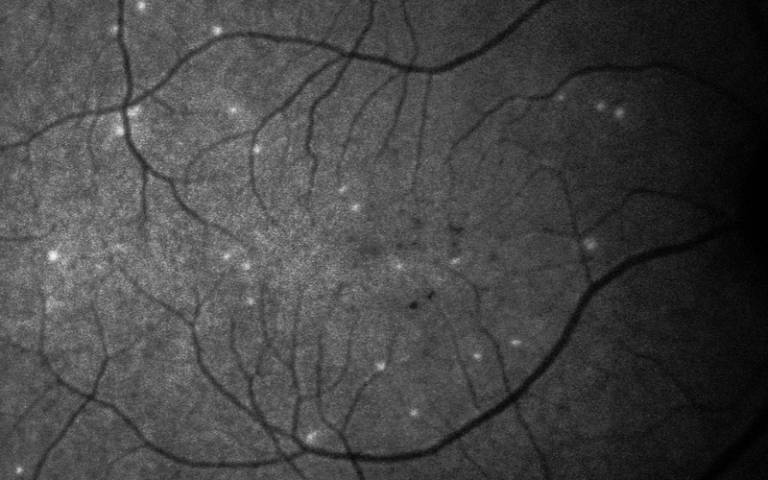AI used to test very early signs of glaucoma progression
3 May 2020
A study led by Prof Francesca Cordeiro presents a new test that can detect glaucoma progression 18 months earlier than the current gold standard method.

A recently developed technology called DARC (Detection of Apoptosing Retinal Cells) identifies cellular level disease activity in the retina.
Developed by UCL Professor of Glaucoma and Retinal Neurodegeneration Francesca Cordeiro, the technology, when supported by an artificial intelligence (AI) algorithm, could help accelerate clinical trials. Eventually it may be used in detection and diagnostics, as described in the Wellcome-funded study published in Expert Review of Molecular Diagnostics today.
The test involves injecting into the bloodstream (via the arm) a fluorescent dye that attaches to retinal cells, and illuminates those that are in the process of apoptosis, a form of programmed cell death. The damaged cells appear bright white when viewed in eye examinations -- the more damaged cells detected, the higher the DARC count
Prof Cordeiro said:
These results are very promising as they show DARC could be used as a biomarker when combined with the AI-aided algorithm. What is really exciting, and actually unusual when looking at biological markers, is that there was a clear DARC count threshold above which all glaucoma eyes went on to progress
First author Dr Eduardo Normando (Imperial College London and Western Eye Hospital Imperial College Healthcare NHS Trust) said:
“Being able to diagnose glaucoma at an earlier stage, and predict its course of progression, could help people to maintain their sight, as treatment is most successful if provided at an early stage of the disease. After further research in longitudinal studies, we hope that our test could have widespread clinical applications for glaucoma and other conditions.
- View the study on Expert Review of Molecular Diagnostics
 Close
Close

